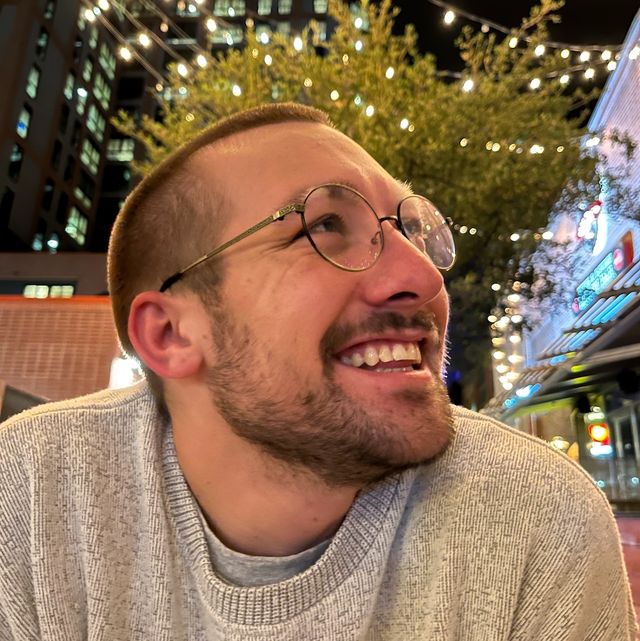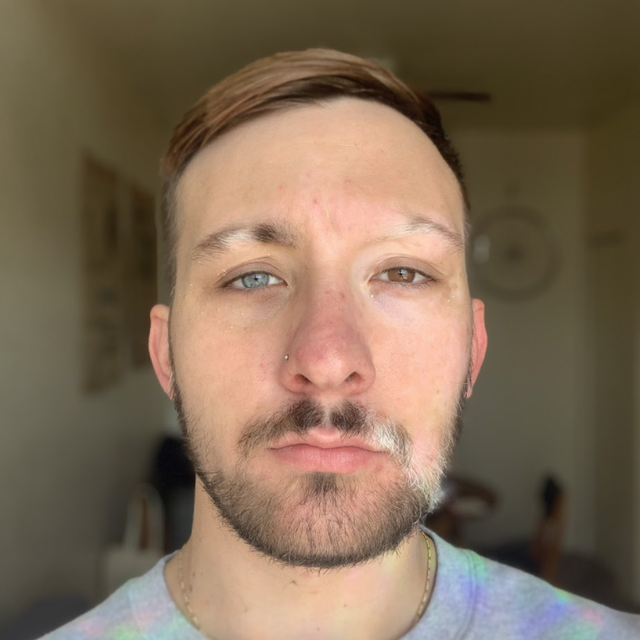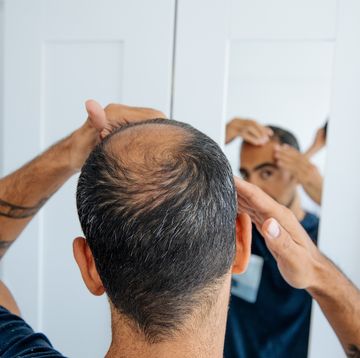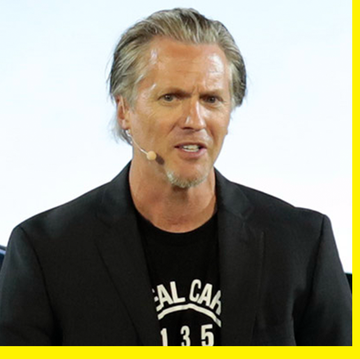Hearing graduate student Bryson Southard talk, you’d never believe that he was ever anything but a confident, positive person. But the truth is, he has navigated a long road to get to this point. “Being diagnosed with vitiligo as a young child led to some serious personal challenges, and I often felt like I needed to hide myself because I looked different,” Southard says. “Learning to be an advocate for myself and openly sharing my experiences with others has really helped me navigate my condition.”
Vitiligo is a chronic condition, in which a person’s immune system attacks the cells responsible for producing skin and hair color, which results in white patches. It affects up to 2-3 million people in the U.S. and occurs with similar frequency in all ethnic groups and while it can occur at any age, initial symptoms usually appear before age 30.
It was when Southard was 8 years old that he was diagnosed with the skin condition after noticing a small white spot on the side of his torso. It wasn’t until a similar spot appeared under his left eye that he and his parents began asking questions and visited a dermatologist.
A Vitiligo Journey
Learning to live with a chronic condition, particularly one as visible as vitiligo, had an impact on Southard physically and mentally. “Throughout middle school, my spots began to spread quickly, and by the time I was entering high school, half of my face was affected, including my eyebrows and portions of the hair on the back of my head,” he says. “I was really insecure, because I knew that I stood out, which was isolating at times. Also, knowing that my appearance could change rapidly at any point was something I really struggled to accept.”
Being visibly different during adolescence, when everyone is trying their hardest to fit in, wasn’t easy, and Southard had to deal with more than his share of trouble. “People don’t always understand what vitiligo is or why it occurs, and often it is misperceived as contagious. Many people in my life, including some family members, weren’t accepting of my condition. While not always ill-intended, they would ask questions or make comments about my skin that were uncomfortable and hurtful. For instance, I’ve been told that I looked like a dog or a cat because of the patches on my skin,” Southard explains.
Tired of dealing with questions and comments about his appearance, Southard tried anything he could think of to change it. “At one point, I dyed my eyebrows consistently to try and hide my vitiligo as much as I could. It has taken a long time to get to a point of accepting my appearance. Even now, as confident as I am, I still have days when I struggle to cope.”
Finding a Support System
Despite having to deal with a lot of insensitivity and misunderstanding along the way, Southard found loving, supportive people he could lean on. “For me, creating a strong support system was such a big part of learning to accept and love the way I look,” he says. “[At first,] I tried to deal with difficult experiences alone, which caused a lot of my anxiety and insecurities. Learning to be an advocate for myself and openly sharing my experiences with others has really helped me.”
Family and friends offering him space to open up about his vitiligo became an important part of Southard’s journey. “One of my best friends from college played a big role,” he says. “She was one of the first people not to ask me about my white patches. Instead, she allowed me to initiate the conversation about my vitiligo when I was ready. Her friendship has impacted me significantly and opened so many doors for me to educate others about my condition.”
As someone who has experienced many ups and downs when it comes to living with vitiligo, Southard understands all of the emotions that come with living with this condition. He adds, “It’s important to be honest about your experiences with both your dermatologist and the broader vitiligo community. By sharing my story, I hope I can help other people with vitiligo to know they’re not alone.”
From Avoidance to Advocacy
Recently, Southard, has found new and creative ways to engage with and advocate for the vitiligo community. He’s currently participating in a new initiative called, This Is Vitiligo, which amplifies the perspectives of people living with vitiligo, shares facts about the condition, and encourages them to find a dermatologist to discuss their individual management goals. As part of this program, Southard recently filmed a public service announcement to raise awareness of vitiligo and encourage people with vitiligo to talk to a dermatologist.
He’s also making it a point to have a strong presence in places where young people with vitiligo can learn more and connect with others, namely, social media. “I enjoy being creative and posting content on my platforms,” he says. “I love the community that I’ve developed online and am so grateful to have a platform to interact with others who have the same condition. I hope that my experiences with vitiligo can help someone who may be dealing with situations similar to what I faced. I try to view myself as being the person I wish I’d had.”
What Everyone Should Know About Living With Vitiligo
While Southard spends most of his time supporting and encouraging others with vitiligo, he has some advice for people who know someone who has the condition or may be living with it themselves:
- Be proactive. If you or a loved one are experiencing signs of what appears to be vitiligo, take the initiative and schedule an appointment with a dermatologist. “[Dermatologists] are continuing to learn more about vitiligo and potential ways to help manage it,” says Southard.
- Assemble a care team. It’s important for people with vitiligo to work with a dermatologist to create an individualized management plan. “Whether you have been recently diagnosed with vitiligo, or have been living with the condition for a while—I recommend finding a dermatologist you trust,” says Southard. “Having open and honest conversations about how vitiligo is impacting you—both physically and emotionally— is important,” says Southard.
- Be sensitive. “Kindness and empathy go a long way,” says Southard. “Understand that we’re people, too. It’s important to recognize that navigating a condition like vitiligo can be really difficult on so many levels. Be supportive and understanding. Let your friends and loved ones know they’re not alone and help them realize they’re not defined by their vitiligo.”
- Educate yourself. If you know someone with vitiligo, take the time to educate yourself. “Unlike when I was growing up, today there are so many more resources available to help you understand and be an advocate for people with vitiligo,” says Southard. “ThisIsVitiligo.com is a great place to learn more about the condition and hear directly from people who are living with it.”
MAT-DRM-00820 01/23














